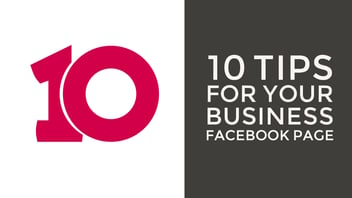7 Ways You Need to Personalize Your Marketing Content

Do you have a favorite store, restaurant or coffee shop—one where they recognize you when you walk in the door, greet you by name and start your “usual” before you even have to ask?
There is a certain comfort in doing business with someone who remembers a few details about you and uses them to make your experience better. Double shot, soy, no whip, right?
Personalization.
While it isn’t easy to replicate in the virtual world, with dynamic content you can begin the process of personalizing your web visitor’s experience and connecting with them in a way that shows you are interested in meeting their individual needs.
What is dynamic content? Dynamic content is the term for all aspects of a website or email that change based on a website visitor’s profile data or history of interactions with a company.
Ways to personalize:
1. Name
“Welcome back, Kristin.” “Hi, Kristin! We have good news for you.”
Nearly everyone feels more welcome and positive when they are greeted by name, even if it is simply a note at the top of a frequently-visited website. Once you have someone’s name in your database, as a customer, a blog subscriber, or lead who has downloaded an inbound marketing offer, use their name on your website and in emails to show you recognize them.
2. Interest area or industry
If someone visits your website and downloads content focused on a specific topic, that is your hint to offer them related materials, rather than just showing everyone the same thing. If someone comes to your website for an HVAC company looking for information on comparing commercial air conditioning units, don’t send them offers or emails about residential furnaces. Show that you were “listening” and focus on sending them information and offers about the topics that matter to them.
Relevant emails drive 18 times more revenue than broadcast emails. (Click to tweet)
If a website visitor has filled out a landing page form that indicates what industry they work in, you could also personalize the images and offers they see on your website to match their industry. For example, if you serve several different industries—say, government, health care and education—use the a smart content generator on your website to show return visitors from the education field images of schools, while health care representatives see medical settings.
3. Geographic area
Today’s websites can also detect where a web visitor is located and offer specific content or calls-to-action based on geography. For example, if your company is planning events in New York, Houston and Los Angeles, program your site to show East Coast visitors a call-to-action promoting the New York event, while those whose ISPs (internet service providers) show they are located on the West Coast would get an invitation to the LA soiree.
If you have a global company, your website might automatically offer different language versions or content that is specific to individual countries.
Places to use personalization
1. Website greetings
Log on to any ecommerce site you frequent and it will likely greet you by name, letting you know that the site recognizes you and has your information ready to facilitate a transaction.
Your website can do the same, recognizing individual repeat visitors and greeting them at the top of the home page, reducing the time it takes for them to begin engaging with your site.
2. Calls-to-action
As we mentioned above, the calls-to-action visitors see when they come to your website should be personalized based on what you already know about them. Think about Amazon: It provides you with a whole list of suggested purchased based on items you have purchased or perused in the past. If the last time you visited you purchased a rice cooker, you can expect suggestions for cookbooks, kitchen accessories and specialty rice blends.
3. Email greetings
A generic greeting is an instant marker of a mass email that may or may not have anything you want to read. Don’t make that mistake when emailing your prospects and customers. Greet them by name.
Personalized emails improve click-through rates by 14 percent and conversion rates by 10 percent. (Click to Tweet)
4. Email topics and content
Remember what we said above about the revenue impact of sending relevant emails, rather than generic broadcast emails. Emails offering relevant information and offers are at the heart of lead nurturing and dynamic content.
Each email you send should have a specific purpose, and the more relevant it is to your prospect’s needs, the higher the response rate will be.
Implement the steps in our Introduction to Dynamic Content to personalize interactions with your prospects, leads and customers. You can begin to replicate the comfort and trust of the corner coffee shop or that place where everybody knows your name. Oh, and make mine a grande mocha, extra whip with chocolate sprinkles.
-1.png?width=1652&height=294&name=Jones(RGB)-1.png)












